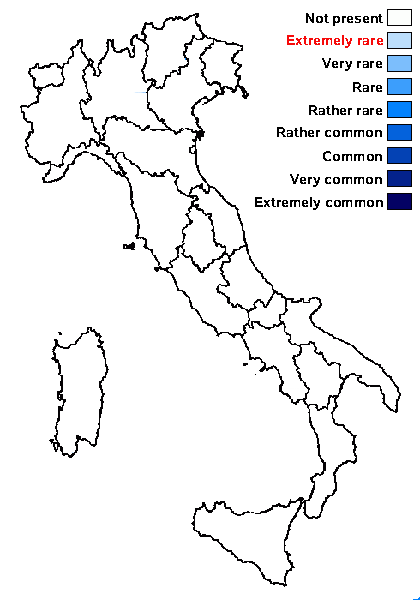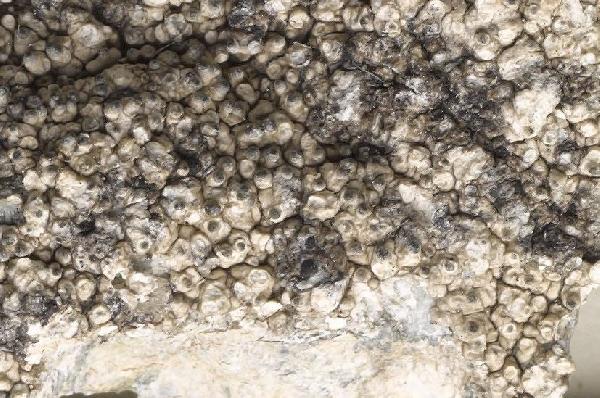Rhizocarpon schedomyces Hafellner & Poelt
Herzogia, 4, 1-2: 7, 1976.
Synonyms:
Distribution:
Description: Thallus crustose, brownish grey, continuous to rimose, sometimes inapparent, poorly delimited, forming 1-2 mm wide, finally often confluent patches on the thalli of epilithic Pertusaria-species. Thallus hyphae I+ blue. Apothecia lecideine, black, round, immersed to sessile, 0.2-0.4(-0.7) mm across, with a slightly convex, rough disc and a thin, finally excluded proper margin. Proper exciple thin, of radially arranged hyphae, reddish brown; epithecium reddish brown, 15-20 μm high; hymenium colourless, 80-110 μm high; paraphysoids branched and anastomosing, 1.5-2 μm thick at mid-level, the apical cells up to 3 μm wide; hypothecium brown-black, up to 120 μm high. Asci (4-6-)8-spored, clavate, fissitunicate, with a well-developed tholus that is K/I- in lower part and K/I+ blue near the apex, lacking an ocular chamber, Rhizocarpon-type. Ascospores 1-septate, at first hyaline but soon turning grey to brown-black, ellipsoid, (18-)20-24(-28) x 9-12 μm, distinctly halonate. Photobiont chlorococcoid. Spot tests: cortex and medulla K-, C-, KC-, P-. Chemistry: thallus without lichen substances. Note: a species with a mainly endothalline thallus visible around the apothecia as a greyish-brownish discoloration and 1-septate, pigmented ascospores; on weakly calciferous schists or basic siliceous rocks, obligately parasitic on saxicolous Pertusaria (e.g. P. pseudocorallina), forming minute insular patches; so far only known from the Eastern Alps (Austria); to be looked for in the Italian Alps.
Growth form: Crustose
Substrata: rocks
Photobiont: green algae other than Trentepohlia
Reproductive strategy: mainly sexual
paras Pertusaria-species

Predictive model
Growth form: Crustose
Substrata: rocks
Photobiont: green algae other than Trentepohlia
Reproductive strategy: mainly sexual
paras Pertusaria-species

Predictive model
 INDEX FUNGORUM
INDEX FUNGORUM
 GBIF
GBIF


